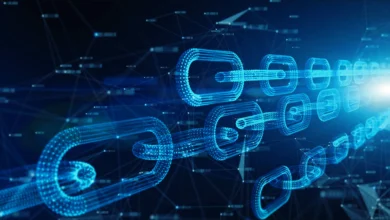A Comprehensive Guide to Bitcoin Investment: How to Get Started and Maximize Your Returns

Bitcoin, the world’s first and most widely recognized cryptocurrency, has transformed the financial landscape. Over the years, Bitcoin investment has gained immense popularity due to its potential for high returns, the opportunity to diversify investment portfolios, and its unique position as a hedge against inflation. In this comprehensive guide, we’ll take you through everything you need to know about investing in Bitcoin, from the basics to advanced strategies for maximizing your investment.
Why Bitcoin Investment is Gaining Popularity
Bitcoin’s growth as an investment vehicle has made it a favorite among both traditional investors and crypto enthusiasts. The cryptocurrency’s potential for explosive returns, combined with its decentralized nature, has positioned Bitcoin as a revolutionary asset in the financial world.
- High Return Potential
Bitcoin has shown the ability to provide high returns for long-term investors. Despite its price volatility, those who have held Bitcoin over the years have seen significant growth in their investments. - Hedge Against Inflation
Unlike traditional fiat currencies, Bitcoin operates on a fixed supply model. There will only ever be 21 million Bitcoin, making it an attractive option for investors looking to protect their wealth against inflation and economic uncertainty.
How to Get Started with Bitcoin Investment
If you’re interested in Bitcoin investment, getting started is straightforward, but it’s essential to follow the right steps. Here’s how you can begin:
- Select a Reputable Cryptocurrency Exchange
The first step to Bitcoin investment is to purchase Bitcoin from a trusted exchange. Some of the most popular exchanges include Coinbase, Binance, and Kraken. Make sure the platform you choose has solid security measures and positive user reviews. - Set Up a Secure Wallet
Storing your Bitcoin securely is paramount. You can choose between hot wallets (online storage) or cold wallets (offline storage) based on your preferences for ease of access and security. - Invest in Small Amounts First
As a beginner, it’s best to start small to get comfortable with the market’s fluctuations. This will help you understand the volatility of Bitcoin without exposing yourself to significant risks. - Monitor the Market Regularly
The cryptocurrency market is highly volatile, and prices can change rapidly. Use apps or platforms that allow you to track Bitcoin’s price movements and stay updated with the latest news about the crypto market. - Adopt a Long-Term Strategy
Many successful Bitcoin investors have adhered to a long-term investment strategy known as “HODLing.” This involves buying Bitcoin and holding onto it, even during market fluctuations, with the expectation that its value will rise over time.

Understanding the Risks of Bitcoin Investment
Bitcoin investment is not without risks, and it’s crucial to understand these risks before diving in:
- Market Volatility
Bitcoin’s price can experience dramatic fluctuations, which can result in both significant gains and losses. It’s essential to be prepared for market volatility. - Regulatory Risks
As governments and regulators around the world continue to formulate policies regarding cryptocurrencies, there is always the risk that new regulations could impact Bitcoin’s price or accessibility. - Security Risks
While blockchain technology is highly secure, exchanges and wallets are not immune to hacking. It’s essential to use platforms with strong security measures and take steps to protect your investment.
Maximizing Your Bitcoin Investment: Tips and Strategies
To maximize your Bitcoin investment, consider the following strategies:
- Diversify Your Portfolio
Although Bitcoin can offer substantial returns, it’s a good idea to diversify your investments to minimize risk. Consider adding other cryptocurrencies or traditional assets to your portfolio. - Stay Informed
The cryptocurrency space is constantly evolving. Staying informed about market trends, technological developments, and regulatory changes will help you make better investment decisions. - Use Dollar-Cost Averaging
Rather than trying to time the market, consider investing a fixed amount in Bitcoin at regular intervals. This strategy, known as dollar-cost averaging, can help reduce the impact of short-term price fluctuations.
Also Read: Crypto Trading: A Comprehensive Guide for Beginners and Experts

The Future of Bitcoin Investment: What’s Next?
The future of Bitcoin investment looks promising as adoption continues to increase. With growing institutional involvement and the development of new financial products related to Bitcoin, its potential as a store of value and investment vehicle is expanding. As more people recognize Bitcoin’s benefits, its value may continue to rise, making it an increasingly important asset for investors worldwide.
Conclusion: Should You Invest in Bitcoin?
Bitcoin investment offers a unique opportunity to grow your wealth, but it comes with risks that require careful consideration. Whether you’re looking for high returns, a hedge against inflation, or a long-term investment, Bitcoin has the potential to provide significant rewards. By staying informed, following a sound investment strategy, and using secure platforms, you can navigate the world of Bitcoin investment successfully.
As with any investment, always do your due diligence and be prepared for the market’s ups and downs. Bitcoin’s future remains bright, and its place in the global financial system is only expected to grow.





One Comment